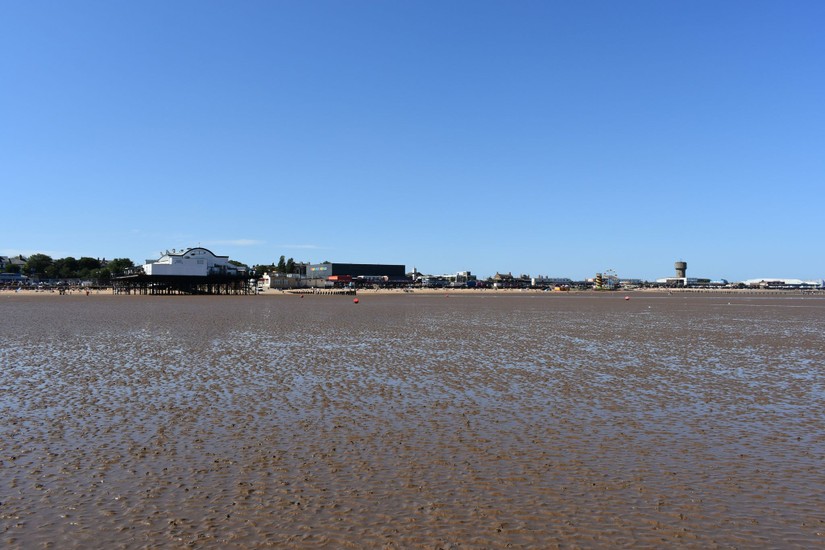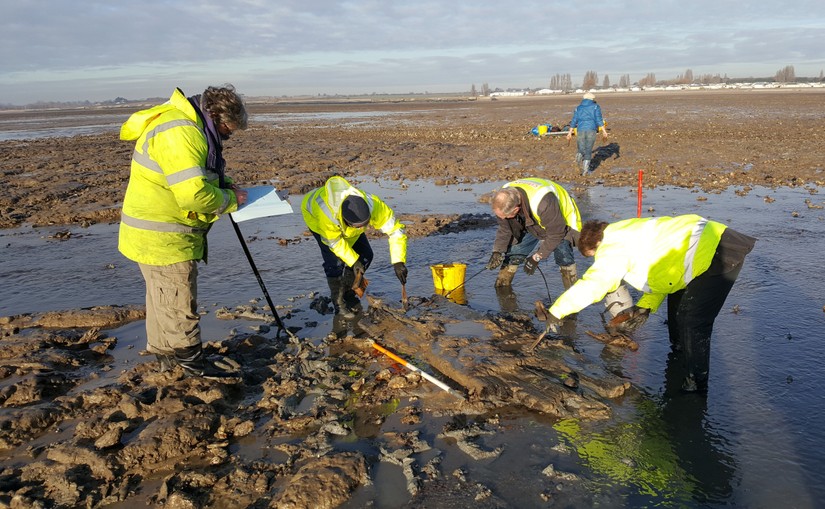How can we tackle climate change?
01/11/2021 | CITiZAN
How can we tackle climate change?
This is the big question that world leaders, businesses and people around the world are asking as all eyes focus on Glasgow for the COP26 summit. Climate change – the trigger for extreme weather, rising sea levels and coastal erosion – can’t be stopped but we can take action against climate change.
Crucially, coastal and intertidal archaeology can help to shape climate action.
Our archaeological research provides important data and new ways of thinking about how to manage the risks posed by climate change, and how we can adapt our ways of living and our practices to give communities and nature the strength and resilience to navigate the inevitable effects of climate change.
Based on years of multi-disciplinary research and community engagement, here is CITiZAN’s top 5 for climate action:

1.Archaeological and heritage sites are threatened by climate change but also provide clues about how we can adapt to climate change.
Humans have been adapting to changes in climate for thousands of years, and so archaeological research is crucial if we are to understand what methods are and aren’t effective in protecting our coastal towns and landscapes - from building defensive structures like sea walls and groynes, to creating salt marshes. Sadly, severe weather from climate change is destroying the vulnerable coastal and intertidal archaeological sites that has the potential to offer invaluable insight for climate action today.

2. Local knowledge and community-focussed programmes are essential to successfully addressing and managing impacts of climate change.
The knowledge gained from coastal communities must inform local strategies to managing coastal erosion but can also provide recommendations for national and international strategies.
On Mersea Island, Essex, archaeologists from CITiZAN worked alongside the local community to understand the rapid transformation of the island’s coastal environment. Researchers brought together an evocative collection of over 300 historical photos, postcards and oral histories, alongside historical maps, which were analysed against archaeological and ecological indicators of coastal change.
This exceptional dataset revealed a timeline of major changes to the foreshore, highlighting when human interactions and natural events combined to transform the island’s coastline. This community data uncovered a complex story of coastal change in a way formal scientific study could not. As well as shining a light on what might happen to our coasts in the coming century, it provides crucial intelligence on what we can do to shape that future.
Find out more in our Changing Minds, Changing Coasts Storymap.

3. Archaeological data is vital to climate modelling and policy.
It is a rich source of data, it provides evidence on changing water levels over time, it informs communities about the probabilities of floods and the potential for coastal damage and offers tried and tested solutions to tackling coastal change.
When the tide is out at Sandwich Bay, wooden stakes scatter the expansive foreshore. The V-shaped lines of stakes form all that is left of a once extensive network of late 18th to 20th century coastal fish traps.
When operational, these fish traps featured suspended nets for catching fish on the outgoing tide. Their location had to be far enough out on the foreshore to catch the fish but accessible enough on low tides to collect the catch. Those that remain underwater at low tide today provide vital data on changing sea levels since they were constructed and used, as well as changes in the area’s biodiversity.
Historic coastal mapping projects illuminate the complex local reasons why and how coastal changes occur, which is crucial for future trend projections. In studying human coastal interventions through time, we can understand how we can effectively adapt to climate change now.

4. Sharing local climate stories opens much needed discussion about climate change and shares knowledge that informs climate action.
Climate stories reveal how communities have been affected by, adapted to and built resilience against the effects of climate change. They can reveal a range of approaches, including natural solutions to coastal erosion, such as the creation of salt marshes and preservation of sand dunes.
In Lincolnshire, between Tetney Marshes and Cleethorpes Local Nature Reserve, a landscape rich in archaeological remains, including prehistoric submerged forests. Lincolnshire Wildlife Trust, among others, are restoring the sand dunes as a means of protecting the coastline and its heritage from severe weather events.

5. We aren’t always going to be able to save our coastlines…but archaeological evidence can prepare us for what is to come.
It can and should be used to inform tough decisions and help to build resilience in our vulnerable coastal communities before it’s too late.
The small fishing village of New Brighton on the Wirral Peninsula became a haven for working-class holidaymakers with the coming of the railways in the 19th century. To protect the town from storms and rising sea levels, a succession of coastal defences was built, including seawalls and rubble and concrete structures. Despite the best efforts of Edwardian and modern coastal engineers, the sea piled over the concrete defences in December 2013, when a low-pressure weather system, backed by gale-force winds, hit. A further 20 episodes of flooding have overwhelmed the town’s sea defences since.









